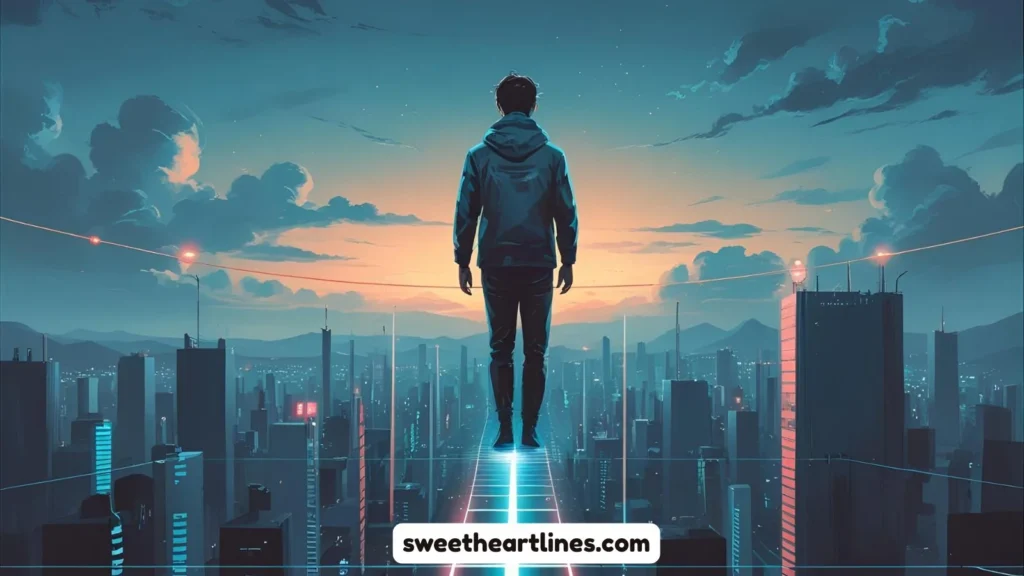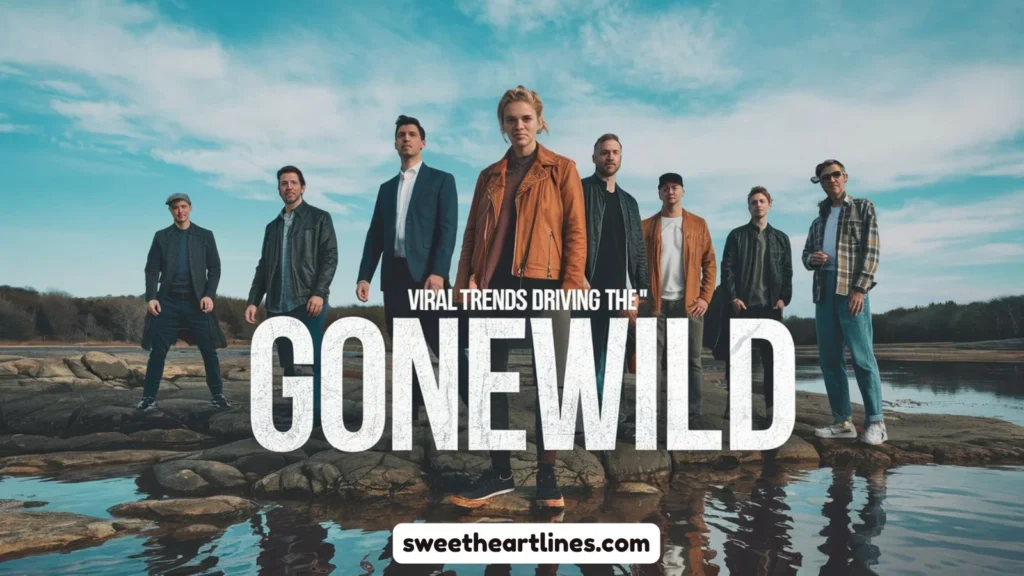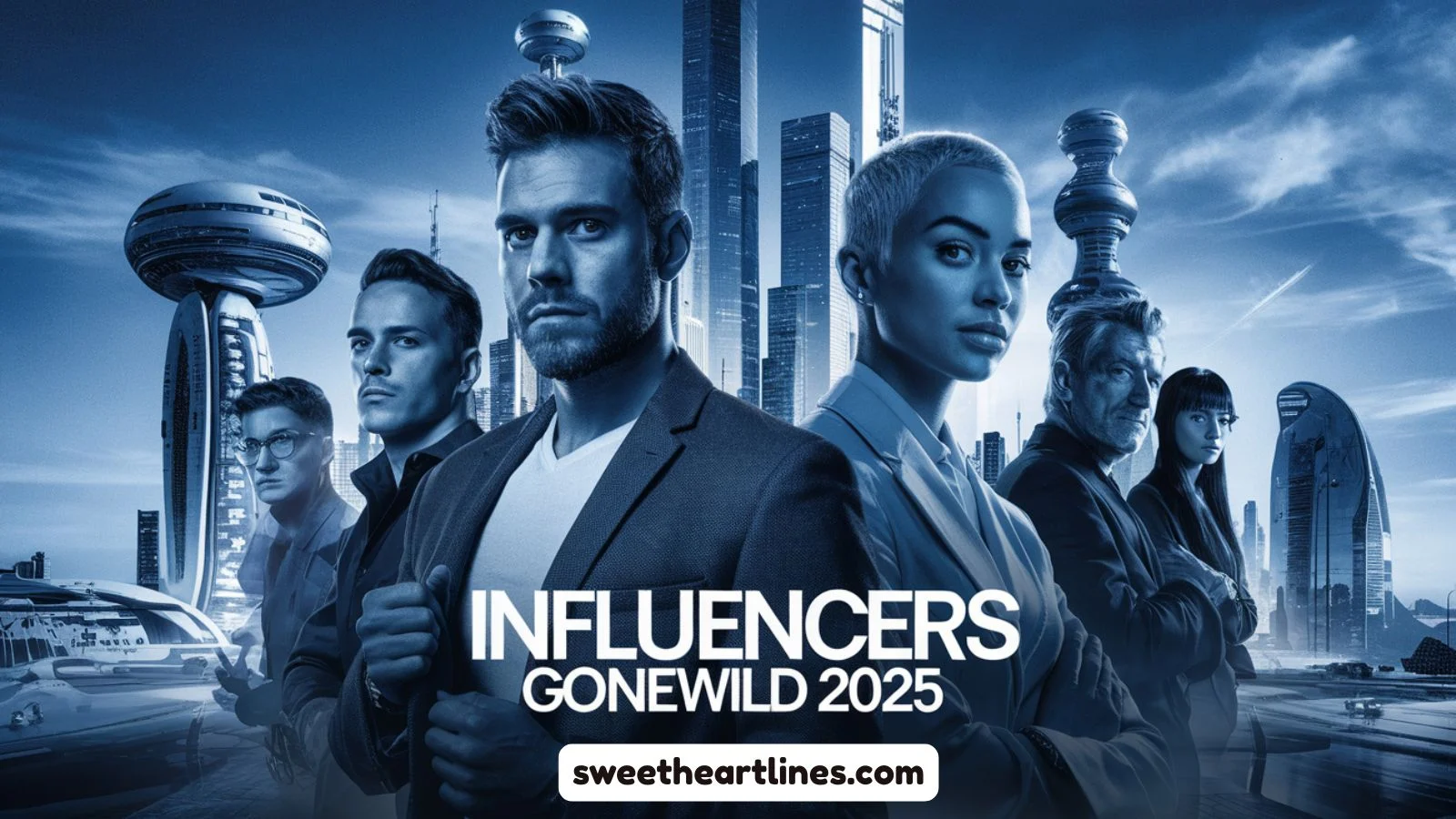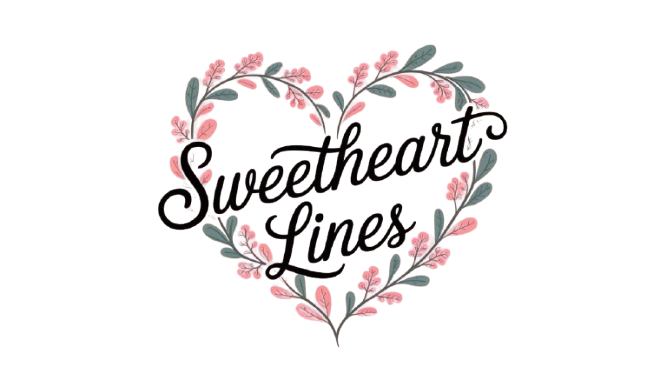Welcome to 2025—the year influencer culture officially went wild and unfiltered. Forget the days of glossy Instagram feeds and picture-perfect lives. Today’s digital world thrives on raw moments, outrageous stunts, and unpredictable personalities.
The phrase “influencers gonewild” isn’t about chaos for chaos’ sake—it’s about creators pushing boundaries in the desperate race for eyeballs, likes, and viral fame. With 63.9% of the world’s population active on social media, the stakes have never been higher. Every click, every share, and every outrageous post fuels a culture where authenticity collides with recklessness, creating jaw-dropping content that audiences can’t stop watching.
From shocking pranks and dangerous challenges to behind-the-scenes glimpses and unfiltered bloopers, today’s influencers aren’t just entertainers—they’re living spectacles. And while some find success in this wild pursuit of attention, others crash under the weight of controversy, backlash, and burnout.
This article dives deep into the phenomenon of influencers gonewild 2025: why it’s happening, the psychology behind it, the risks involved, and what it means for the future of digital fame.
The Rise of Influencers Gonewild 2025
Social media isn’t just about glossy selfies and curated feeds anymore. In 2025, the term “influencers gonewild” has exploded, describing creators who abandon safe, polished content in favor of raw, bold, and outrageous stunts that capture massive attention. It’s not about filters—it’s about being unfiltered, sometimes shockingly so.
This shift reflects a cultural hunger for authenticity, but also exposes the risks of pushing boundaries too far. Influencers now compete not just on talent or relatability, but on how daring, unpredictable, and entertaining they can be.
| Traditional Influencer Style | Gonewild Influencer Style (2025) |
| Polished Instagram feeds | Raw, candid, unfiltered videos |
| Sponsored brand collabs | Controversial stunts and viral pranks |
| Relatable lifestyle vlogs | Jaw-dropping antics, wild adventures |
| Consistent posting schedule | Spontaneous, shocking uploads |
| Safe, brand-friendly content | Risky, unpredictable, viral-focused |
Why Social Media Stars Push Boundaries

Why do creators go wild? Because the market is oversaturated. With more influencers than ever, competition for attention is fierce. The more extreme the content, the more likely it is to land on TikTok’s For You Page, trend on Twitter threads, or go viral on YouTube Shorts.
Creators know that audiences crave novelty. A polished selfie doesn’t cut it anymore. To stand out, influencers chase outrageous stunts, shocking “bloopers,” and behind-the-scenes meltdowns that feel real.
“Safe content blends in. Wild content gets remembered.”
| Motivators for Going Wild | Impact |
| Fear of irrelevance | Influencers escalate stunts to stay visible |
| Algorithmic rewards | More engagement → more reach |
| Audience demand for authenticity | Risk of oversharing and controversy |
| Financial incentives | Views convert to sponsorships and ad revenue |
From Curated Feeds to Raw and Unfiltered Moments
The 2010s were all about curated Instagram aesthetics. The 2020s shifted toward TikTok trends and fast content. Now, in 2025, audiences reject overly polished personas. They want raw moments—messy apartments, emotional breakdowns, bloopers, and shocking antics that reveal a creator’s real personality.
But this authenticity paradox is dangerous. Influencers walk a fine line between being real and being reckless. One slip can turn a viral hit into a public relations disaster.
Behind-the-Scenes Glimpses vs. Polished Posts
Audiences are savvy. They know curated perfection isn’t real. That’s why behind-the-scenes footage performs so well. Fans love catching unguarded moments: a celebrity’s wardrobe malfunction, an influencer yelling at crew members, or bloopers from brand shoots.
| Content Type | Engagement Rate (2025 Averages) |
| Polished brand post | 3–4% |
| Behind-the-scenes vlog | 8–10% |
| Wild prank or spontaneous video | 12–15% |
| Controversial stunt | 18%+ (but high risk) |
The numbers show it: chaos sells.
Viral Trends Driving the “Gonewild” Phenomenon

In 2025, influencer culture thrives on trends that blur lines between entertainment, recklessness, and outright controversy. Some notable viral themes include:
- Public chaos pranks (fake protests in malls, luxury store stunts)
- Extreme physical challenges (jumping from moving vehicles, rooftop parkour)
- Shocking confessions (fake marriages, staged scandals)
- Edgy humor (borderline offensive jokes, controversial skits)
- Dangerous livestreams (driving stunts, risky dares for donations)
These aren’t just random acts—they’re calculated risks meant to grab maximum engagement in minimum time.
Outrageous Stunts and the Race for Eyeballs
The influencer economy thrives on attention as currency. With a massive global audience (63.9% of the world’s population active online), even a few seconds of viral fame can change a career overnight.
But the race for eyeballs creates desperation:
- Fake weddings streamed for millions.
- Staged scandals involving friends and family.
- Outrageous stunts like bathing in fountains at luxury malls.
This constant chase for virality creates a reinforcement loop: more extreme stunts → more engagement → bigger rewards → even riskier stunts.
The Psychology of Shock Value: Why Fans Can’t Look Away
Humans are hardwired to react to surprise and controversy. Psychologists compare viral influencer antics to reality TV on steroids. The unpredictability keeps audiences glued.
| Psychological Driver | Effect on Audience |
| Dopamine spikes from novelty | Addiction to scrolling for “what’s next” |
| Operant conditioning | Likes/comments reinforce wild behaviors |
| Fear of missing out (FOMO) | Fans obsess over catching viral moments live |
| Voyeurism | Desire to see unfiltered, candid realities |
This explains why shocking, unfiltered content spreads faster than safe, curated posts.
Influence, Fame, and the Desperate Pursuit of Relevance
Influencers in 2025 fear one thing more than anything else: irrelevance. With new faces popping up daily, staying relevant means constantly reinventing yourself—or going wilder than the competition.
Some influencers fuse multiple personas: the prankster, the activist, the entertainer, the lifestyle coach. But this fragmented identity often leads to burnout and blurred boundaries between performance and reality.
Digital Addiction: Dopamine, Likes, and Endless Scrolls
Social media platforms are built like slot machines. Every notification—whether it’s a like, share, or new comment—triggers a dopamine hit. This cycle encourages creators to produce more extreme content, while audiences consume endlessly.
Influencers who go wild know that unpredictability generates more engagement. A shocking prank or jaw-dropping video doesn’t just get clicks—it creates a feedback loop of reinforcement.
| Trigger | Brain Response | Influencer Behavior |
| Likes & hearts | Dopamine spike → reward feeling | Post more outrageous stunts |
| Shares | Social validation | Copy viral challenges |
| Comments | Feedback (positive or negative) | Double down on shock value |
| Follows | Long-term reward | Maintain bold, unpredictable identity |
This loop isn’t harmless. Research from injury.research.chop.edu shows teenagers imitate dangerous stunts they see online, leading to accidents, legal trouble, and even fatalities.
Youth Statistics: How Teenagers Spend 4.5 Hours Daily on Smartphones
Teenagers are among the most impressionable consumers of influencer culture. Studies in 2025 reveal:
- 65% of young adults feel pressure to emulate influencer lifestyles.
- The average teen spends 4.5 hours daily on apps like TikTok, Instagram, and YouTube.
- 30% more likely to engage with “wild” or shocking content than polished posts.
| Platform | Average Teen Usage (Daily) | Trending Content Type |
| TikTok | 2.1 hours | Wild challenges, pranks |
| Instagram Reels | 1.3 hours | Aesthetic trends + raw clips |
| YouTube Shorts | 1.0 hour | Extreme stunts, commentary |
| Other apps (Snap, X/Twitter) | 0.5 hour | Viral memes, edgy debates |
The numbers explain why influencers gonewild find massive traction among youth. Impressionable audiences fuel demand for boundary-pushing entertainment.
Reckless Examples That Shocked the Globe
The past decade has given us plenty of cautionary tales:
- Logan Paul (2018): Filmed a deceased victim in Japan’s Aokigahara forest → global condemnation.
- Lil Tay (2020s): Profanity-laced rants at a young age → parental investigations.
- TikTok Driving Challenges (2023–2024): Teens livestreaming reckless stunts on highways → police crackdowns.
- Alina Fazleeva (Bali, 2022): Deported after nude poses with a 700-year-old sacred Banyan tree → cultural outrage.
These stories show how quickly wild antics can backfire, damaging reputations and sparking international consequences.
When Influence Turns Controversial and Dangerous
Influencers gone wild often blur the line between entertainment and harm. Risks include:
- Physical harm: Stunts that cause injuries (motorcycle tricks, rooftop jumps).
- Social backlash: Cultural insensitivity (mocking traditions, breaking laws abroad).
- Emotional manipulation: Fake relationships, staged scandals.
- Audience exploitation: Selling fake products, misleading endorsements.
When wild behavior crosses into dangerous territory, brands drop deals, platforms suspend accounts, and legal authorities get involved.
Legal Repercussions: From Bans to Criminal Charges
Wild influencer antics don’t just lead to online backlash—they can spark real-world legal trouble.
| Action | Potential Repercussion |
| Breaking public laws during stunts | Arrest, fines, imprisonment |
| Exploitative content | Bans, suspensions, demonetization |
| Dangerous challenges | Civil lawsuits from injured fans |
| Offensive cultural acts | Deportation, international bans |
Example: A Canadian teenager in Kitchener livestreamed a speeding stunt in 2023. When caught by police, he faced charges of reckless driving and evasion, all for likes and comments.
Financial Fallout: Sponsorship Losses and Brand Damage
Brands don’t tolerate risk. When influencers cross ethical lines, sponsorships vanish overnight.
- Monetary Penalties: Companies revoke payments or demand refunds.
- Severed Relationships: Partnerships end abruptly.
- Long-term Damage: Blocklisted from future campaigns.
| Cause | Financial Impact |
| Offensive post | Loss of endorsement deal |
| Dangerous stunt | Suspension from ad networks |
| Public backlash | Decreased brand trust → revenue loss |
| Legal trouble | Lawsuits + penalties |
Statista (2025) projects the influencer market worth $25 billion, but warns that controversies can cause steep declines in individual creator earnings.
Ethical Considerations in a Volatile Digital World
The influencer space sits at a moral crossroads. Audiences crave raw authenticity, but reckless antics harm communities, inspire copycats, and erode trust.
Key ethical questions:
- Should influencers be held accountable for audience behavior?
- Where is the line between creativity and exploitation?
- How should platforms balance freedom with safety?
Educators and psychologists like Emma Richardson argue for more digital literacy programs, teaching youth to discern staged content from reality.
The Role of Algorithms in Fueling Sensationalism
Influencers go wild because algorithms reward chaos. Content that triggers outrage, laughter, or shock keeps viewers engaged longer.
| Algorithmic Bias | Outcome |
| Promotes high-engagement posts | Risky, controversial content rises faster |
| Rewards novelty | Pressure to escalate stunts |
| Prioritizes watch time | Long-form chaotic streams perform well |
This creates a paradox: creators are punished for being safe but rewarded for being outrageous.
Psychological Pressure and the Fear of Irrelevance
The influencer lifestyle isn’t just glamorous—it’s volatile. Constant comparison, algorithmic shifts, and fan expectations create immense anxiety.
- Fear of losing followers = extreme content escalation.
- Dopamine crashes = burnout cycles.
- Identity fusion = blurred lines between online persona and real self.
The “fear of irrelevance” keeps influencers hooked in a dangerous game where mental health often crumbles behind the spotlight.
Public Backlash and Cancel Culture in 2025
Cancel culture has become a powerful force. Outrage spreads faster than apologies.
| Trigger | Response |
| Offensive post or prank | Trending hashtags calling for cancellation |
| Cultural insensitivity | Public boycotts |
| Reckless stunt | Brand deals terminated |
| Misinformation | Content flagged, demonetized |
Apologies rarely repair trust. Many influencers find themselves permanently scarred, even if they bounce back with new audiences.
Case Studies: Logan Paul, Lil Tay, and Other Viral Controversies
- Logan Paul (2018–2021): Apologized, rebranded into boxing and podcasts, but scandal haunts his career.
- Lil Tay (2020s): Symbol of parental exploitation → cautionary tale of child influencers.
- David Dobrik (2021): Demonetized after misconduct allegations → lost sponsorships.
- Bella Delphine (2019): Sold “Gamer Girl Bathwater” → blurred satire and exploitation.
Each case shows how wild antics can lead to fame but also permanent reputational scars.
Cultural Sensitivity: When Creators Cross Global Boundaries
Global platforms mean local customs matter. Missteps can lead to international scandals.
Example: Alina Fazleeva posing nude near Bali’s sacred tree → deportation, cultural anger.
| Action Abroad | Cultural Consequence |
| Ignoring sacred customs | Local outrage, legal action |
| Exploitative tourism stunts | Deportation, bans |
| Offensive humor | International backlash |
The Intersection of Creativity, Risk, and Responsibility
Influencer culture thrives on creativity. But without responsibility, innovation can morph into recklessness. The healthiest influencers balance bold entertainment with ethical standards—a skill that separates long-term careers from viral crashes.
Sustainable Influencer Strategies Beyond the Drama
Going wild may bring quick fame, but sustainability comes from:
- Consistency over chaos
- Authenticity without recklessness
- Educational or entertaining value
- Community-driven content
| Short-Term Viral Tactics | Sustainable Growth Strategies |
| Extreme stunts | Niche expertise + tutorials |
| Fake scandals | Transparent collaborations |
| Shocking pranks | Relatable storytelling |
| Controversial antics | Building loyal, supportive communities |
The Rise of Micro and Nano Influencers: A Healthier Direction
Brands now see higher ROI with micro (10k–100k followers) and nano (under 10k) influencers. These creators build tight-knit, authentic communities without chasing wild antics.
| Influencer Type | Follower Range | Engagement Rate (Avg.) |
| Mega (1M+) | 1,000,000+ | 2–3% |
| Macro | 100k–1M | 3–5% |
| Micro | 10k–100k | 6–9% |
| Nano | Under 10k | 10%+ |
This shift signals a healthier balance where authenticity trumps spectacle.
Platforms Tightening Guidelines to Protect Users
Platforms like TikTok, YouTube, and Instagram are under pressure to curb dangerous trends. New measures in 2025 include:
- In-app warnings for risky challenges.
- AI systems to detect unsafe content.
- Stricter monetization guidelines.
- Demonetization for repeat violators.
While enforcement is still imperfect, platforms are slowly taking responsibility for the content they amplify.
Building Trust, Authenticity, and Longevity in Influencer Culture
The most successful creators in 2025 aren’t the wildest—they’re the most authentic. Trust comes from transparency, consistency, and community engagement.
Influencers who prioritize audience well-being build longer careers than those who burn fast with sensational stunts.
The Future of Digital Fame: Innovation or Implosion?
Where does influencer culture go next? Two possibilities:
- Innovation: AR/VR integration, interactive storytelling, healthier niches.
- Implosion: Oversaturation, scandals, and the collapse of audience trust.
The future depends on how influencers balance creativity with ethics, and how platforms evolve to encourage positive directions.
FAQs
Q1: What does “influencers gonewild 2025” mean?
It refers to the trend of social media creators posting raw, outrageous, and shocking content in 2025 to capture attention and stay relevant.
Q2: Why do influencers go wild instead of sticking to safe content?
Because algorithms and audiences reward shock value and unpredictability, while safe content often gets ignored in an oversaturated market.
Q3: What are the risks of influencers gone wild?
Legal trouble, loss of sponsorships, cultural backlash, mental health strain, and long-term reputational damage.
Q4: Are platforms doing anything to stop dangerous content?
Yes. Platforms like TikTok and YouTube are tightening policies, demonetizing violators, and introducing AI tools to flag harmful behavior.
Q5: What’s the healthier alternative to shock-value influencer culture?
Micro and nano influencers focusing on authentic, community-driven, and sustainable content instead of reckless stunts.
Conclusion
Influencers Gonewild 2025 isn’t just a trend—it’s a mirror reflecting our digital culture. While shocking antics can grab eyeballs and launch careers, they come with risks that often outweigh the rewards. The future of influencer culture depends on whether creators, audiences, and platforms can balance authenticity with responsibility.
At its best, influencer culture inspires creativity, builds communities, and entertains millions. At its worst, it spirals into chaos, scandal, and harm. The challenge for 2025 and beyond? Staying wild enough to engage, but wise enough to endure.












